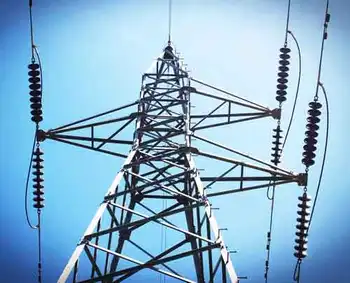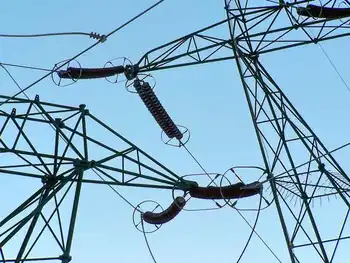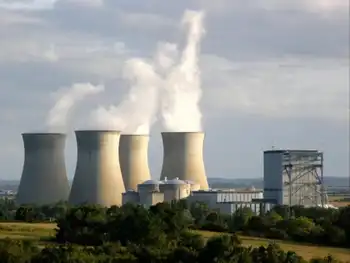Privatize Atomic Energy of Canada Ltd.
By Jan Carr, Financial Post
NFPA 70e Training
Our customized live online or in‑person group training can be delivered to your staff at your location.

- Live Online
- 6 hours Instructor-led
- Group Training Available
Alberta of course, with its massive coal, oil and gas reserves and its status as a global centre of the energy business, is obvious. So too perhaps is Newfoundland and Labrador, not just for its off-shore oil but for the renewable energy bonanza of undeveloped hydroelectric and wind resources in Labrador.
Less obvious is SaskatchewanÂ’s initiative to leverage the 8% of the worldÂ’s uranium supplies it has through the value-added development of a nuclear industry. And similarly, New Brunswick intends to make use of its strategic location and expanding portfolio of electricity and gas infrastructure to become an energy hub for northeastern North America.
But governments have not yet recognized CanadaÂ’s unique capabilities in nuclear power technology as a platform for investment in future prosperity. To suggest that nuclear power could be a vector for sustainable economic development may surprise many. Nuclear energy has an aura of being both environmentally harmful and expensive, but the facts indicate otherwise.
Over the 60 years of its existence Atomic Energy of Canada Limited (AECL) has become one of the worldÂ’s leaders in nuclear power technology with its unique CANDU reactor design. Today half of OntarioÂ’s electricity is generated at Canadian designed, manufactured and operated CANDU nuclear stations. Including those in three Canadian provinces, there are some four-dozen AECL CANDU reactors in operation around the world.
Nuclear energy is featuring heavily in national energy plans throughout the world because it is the only commercially available source of energy on the scale presently provided by coal, oil and gas that does not contribute to climate change through carbon dioxide emissions. The World Nuclear Association reports that 20 new reactors are presently under construction in 11 countries and will join the more than 400 already in service in some 40 countries in providing almost one-fifth of the worldÂ’s electricity supply by 2020. The world needs CanadaÂ’s CANDU technology for at least some of these reactors, and hereÂ’s why.
Unlike all other nuclear technologies, CANDU can use unenriched or natural uranium. This frees owners of CANDU reactors from being tied by long-term contracts to highly specialized and security-sensitive suppliers of enriched fuel. And since it is the enrichment process rather than the nuclear reactor itself that entails the skills and equipment necessary for manufacturing nuclear weapons, CANDU does not add to proliferation concerns in the same way as other technologies.
As well, CANDU reactors can be adapted to burn the spent fuel from enriched fuel reactors. This not only reduces the volume of spent fuel under long-term management in storage sites but it reduces the remnant radioactivity level in the spent fuel. In reducing the volume and potency of waste, CANDU is the Blue Box of the nuclear industry.
The same features that allow CANDU technology to use natural and spent uranium also make it simpler than other nuclear technologies to adapt to using thorium as a fuel. Thorium is not only three to four times more plentiful than uranium but it is also more evenly distributed. Whereas half the worldÂ’s supply of uranium is located in just three countries, three quarters of thorium reserves are evenly spread among six countries. Energy security resulting from plentiful and widespread resources can only reduce geopolitical tension.
The promise of CANDU as a platform for thorium-based energy is no doubt one of the reasons the Chinese government recently signed a development agreement with AECL and why the Indian Prime Minister recently met with AECL and Canadian government officials. Thorium promises countries like China and India energy independence.
India in particular has 12% of the worldÂ’s known thorium and relies heavily on imported energy. Both countries have future energy requirements that could dwarf current consumption by the Western industrialized world and, absent advances such as thorium-burning CANDU reactors, will be based on fossil fuels which contribute to climate change.
So if AECLÂ’s unique Canadian nuclear technology has so many positive attributes, why doesnÂ’t it feature in any governmentÂ’s prosperity plans? In Canada, it seems that this is primarily because AECL is owned by the federal government and energy policy is a provincial responsibility. The traditional ebb and flow of federal-provincial politics and tensions mixed with the less-than-popular image of the nuclear industry and its consequent lack of appeal to voters means that the obvious economic opportunity gets passed over.
Internationally, AECL is hobbled as a publicly owned entity without access to commercially motivated capital and organizational flexibility that its competitors based in France and Japan have. We would all benefit from a well executed privatization focused on relieving taxpayers of AECLÂ’s business risks while freeing up the company to pursue global commercial opportunities. In so doing, economic prosperity would be enhanced by building the ranks of the 30,000 men and women presently working in the 150 companies that constitute CanadaÂ’s nuclear industry.











